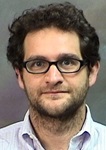This paper is part of the Spring 2019 edition of the Brookings Papers on Economic Activity, the leading conference series and journal in economics for timely, cutting-edge research about real-world policy issues. Research findings are presented in a clear and accessible style to maximize their impact on economic understanding and policymaking. The editors are Brookings Nonresident Senior Fellow and Northwestern University Professor of Economics Janice Eberly and Brookings Nonresident Senior Fellow and Harvard University Professor of Economics James Stock. Read summaries of all six papers from the journal here.
ABSTRACT
This paper bridges the gap between two popular approaches to estimating the natural rate of unemployment, u∗t. The first approach uses detailed labor market indicators such as labor market flows, cross-sectional data on unemployment and vacancies or various measures of demographic changes. The second approach which comprises reduced form models and DSGE models relies mainly on price and wage Phillips curve relationships, together with model-specific assumptions on aggregate demand. We combine the key features of these two approaches to estimate the natural rate of unemployment in the United States using both data on labor market flows and a forward-looking Phillips curve linking inflation to current and expected deviations of unemployment from its unobserved natural rate. We estimate that the natural rate of unemployment stood at 4.1% as of the third quarter of 2018 and that the unemployment gap is roughly closed. Identification of a secular downward trend in the inflow rate from detailed unemployment flows facilitates the estimation of u∗t. We identify the increase in labor force attachment of women, decline in job destruction and reallocation intensity, and dual aging in the labor market of workers and firms as the main drivers of the secular downward trend in the inflow rate.
CITATION
Crump, Richard K., Stefano Eusepi, Marc Giannoni and Aysegul Sahin. 2019. “A Unified Approach to Measuring u*” BPEA Conference Draft, Spring, 143-238.
CONFLICT OF INTEREST DISCLOSURE
Richard Crump is Vice President and Function Head of Capital Markets at the Federal Reserve Bank of New York; Stefano Eusepi is Associate Professor of Economics at the University of Texas at Austin; Marc Giannoni is Senior Vice President and Director of Research for the Federal Reserve Bank of Dallas; Ayşegül Şahin is the Richard J. Gonzalez Regents Chair in Economics at the University of Texas at Austin and an adviser to the Federal Reserve Bank of Dallas. Beyond these affiliations, the authors did not receive financial support from any firm or person for this paper or from any firm or person with a financial or political interest in this paper. They are currently not officers, directors, or board members of any organization with an interest in this paper. No outside party had the right to review this paper before circulation except the Federal Reserve Bank of New York and the Federal Reserve Bank of Dallas. The views expressed in this paper are those of the authors, and do not necessarily reflect those of the Federal Reserve Bank of New York, the University of Texas at Austin, or the Federal Reserve Bank of Dallas.






